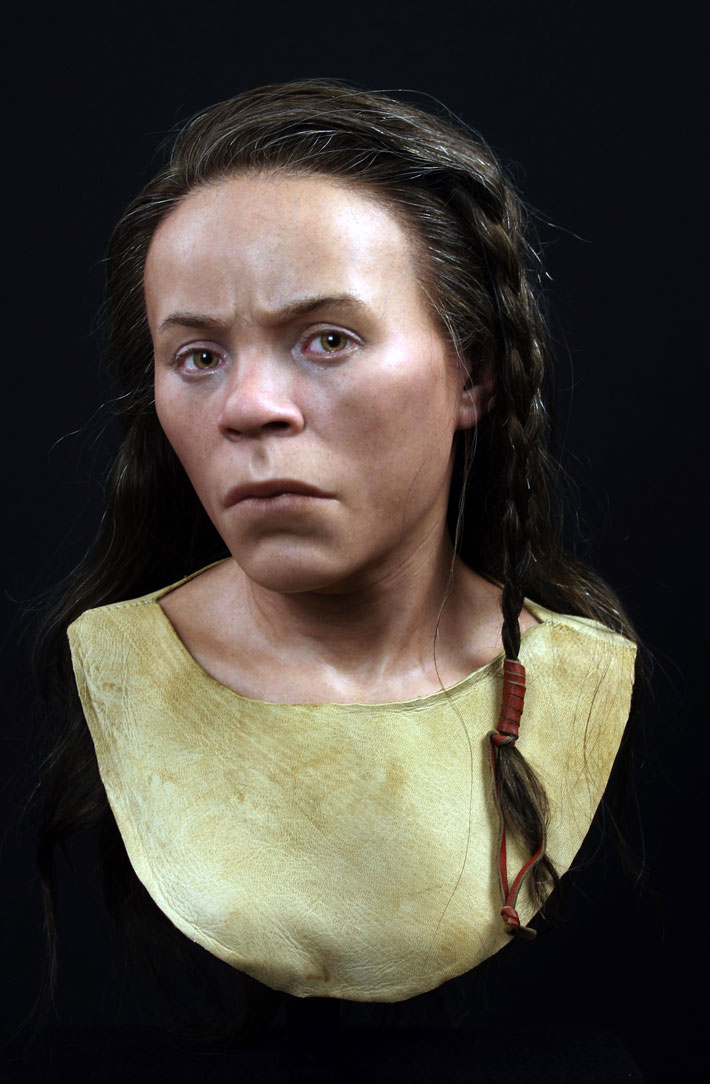 KILMARTIN, SCOTLAND—Live Science reports that the face of the so-called “Upper Largie Woman,” whose 4,000-year-old remains were recovered from Scotland’s Upper Largie Quarry in 1997, has been recreated by forensic artist Oscar Nilsson. A study of the remains indicated that the woman had suffered periods of illness or malnutrition before she died in her 20s. Analysis of strontium and oxygen isotopes in her bones also showed that she grew up in the area where her remains were recovered. Scientists were not able to recover any DNA from her remains, however, so her skin, eye, and hair color are unknown. Pottery found in the burial suggests that the woman was a member of the Beaker culture, and so she may have had ancestors from the Eurasian Steppe. Nilsson first employed a computed tomography scan of the woman’s skull to produce a 3-D print of it. He then rebuilt the skull’s damaged left side, and created a mandible since the original is missing. He then estimated the thicknesses of the woman’s facial tissues, taking into account factors such as her age, sex, and history of undernourishment. “She had a very rounded facial skeleton, which helped her look a bit more healthy than she may have been,” Nilsson commented. The reconstruction was then completed with dark braided hair and a deer-skin outfit. For more on burials in Bronze Age Scotland, go to "Scottish "Frankenstein" Mummies," one of ARCHAEOLOGY's Top 10 Discoveries of 2012.
KILMARTIN, SCOTLAND—Live Science reports that the face of the so-called “Upper Largie Woman,” whose 4,000-year-old remains were recovered from Scotland’s Upper Largie Quarry in 1997, has been recreated by forensic artist Oscar Nilsson. A study of the remains indicated that the woman had suffered periods of illness or malnutrition before she died in her 20s. Analysis of strontium and oxygen isotopes in her bones also showed that she grew up in the area where her remains were recovered. Scientists were not able to recover any DNA from her remains, however, so her skin, eye, and hair color are unknown. Pottery found in the burial suggests that the woman was a member of the Beaker culture, and so she may have had ancestors from the Eurasian Steppe. Nilsson first employed a computed tomography scan of the woman’s skull to produce a 3-D print of it. He then rebuilt the skull’s damaged left side, and created a mandible since the original is missing. He then estimated the thicknesses of the woman’s facial tissues, taking into account factors such as her age, sex, and history of undernourishment. “She had a very rounded facial skeleton, which helped her look a bit more healthy than she may have been,” Nilsson commented. The reconstruction was then completed with dark braided hair and a deer-skin outfit. For more on burials in Bronze Age Scotland, go to "Scottish "Frankenstein" Mummies," one of ARCHAEOLOGY's Top 10 Discoveries of 2012.
Face of Early Bronze Age Woman From Scotland Reconstructed
